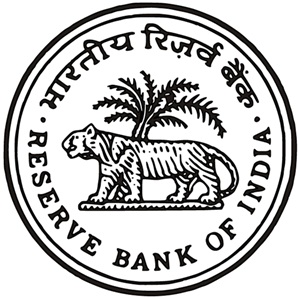Reserve Bank of India (RBI) has directed banks that all new floating rate personal or retail loans (housing, auto, etc) and floating rate loans to micro and small enterprises (MSMEs) extended by banks from 1 October 2019 should be benchmarked to an external rate.

The central bank said the external benchmark for fixing lending rates may include either the RBI’s repo rate, Govt of India three-month treasury bill yield or any other benchmark market interest rate published by the Financial Benchmarks India Private Ltd (FBIL).
Banks are free to offer such external benchmark linked loans to other types of borrowers as well.
In order to ensure transparency, standardisation, and ease of understanding of loan products by borrowers, a bank must adopt a uniform external benchmark within a loan category - in other words, the adoption of multiple benchmarks by the same bank is not allowed within a loan category.
RBI has added a new paragraph to the master direction explaining the spread under External Benchmark, which says that banks are free to decide the spread over the external benchmark. However, credit risk premium may undergo change only when borrower’s credit assessment undergoes a substantial change, as agreed upon in the loan contract. Further, other components of spread, including operating cost, could be altered once in three years.
RBI has also added another paragraph to the Master Direction on reset of interest rates under External Benchmark, which allows banks to reset interest rate under external benchmark once in three months.
For existing loans and credit limits the link to the MCLR/Base Rate/BPLR shall continue till repayment or renewal, as the case may be.
Provided that floating rate term loans sanctioned to borrowers who, in terms of extant guidelines, are eligible to prepay a floating rate loan without pre-payment charges, shall be eligible for switchover to External Benchmark without any charges/fees, except reasonable administrative/ legal costs. The final rate charged to this category of borrowers, post switchover to external benchmark, shall be same as the rate charged for a new loan of the same category, type, tenor and amount, at the time of origination of the loan.
However, existing borrowers shall have the option to move to External Benchmark at mutually acceptable terms, provided that the switchover shall not be treated as a foreclosure of existing facility.
The existing guidelines contained in the Master Direction is applicable for small finance banks and local area banks and the RBI has amended it accordingly.
Some of the other amendments to RBI’s Master Direction include:
- All floating rate loans, except those mentioned in Section 13, shall be priced with reference to the benchmark indicated in chapter III;
- When the floating rate advances are linked to an internal benchmark rate, banks shall determine their actual lending rates by adding the components of spread to the internal benchmark rate; and
- Interest rates on fixed rate loans of tenor below 3 years shall not be less than the benchmark rate for similar tenor and shall be as per directions contained in Section 13(d)(v).
A new paragraph added to the Master Direction says that there shall be no lending below the benchmark rate for a particular maturity for all loans linked to that benchmark.
All floating rate rupee loans sanctioned and renewed between 1 July 2010 and 31 March 2016 shall be priced with reference to the Base Rate, which will be the internal benchmark for such purposes.
Also, all floating rate rupee loans sanctioned and renewed with effect from 1 April 2016 shall be priced with reference to the Marginal Cost of Funds based Lending Rate (MCLR), which will be the internal benchmark for such purposes, subject to the provisions contained in paragraph 7 of the Master Direction.
The periodicity of the reset under MCLR shall correspond to the tenor/maturity of the MCLR to which the loan is linked, RBI stated.
RBI also deleted a paragraph which states that loans “shall be exempted from being linked to Base Rate/MCLR as the benchmark for determining interest rate’’, as also the paragraph which states that loans “shall be priced without being linked to Base Rate/MCLR as the benchmark for determining interest rate’’
RBI has been examining the feasibility of mandating the use of external benchmark for determining interest rate on floating rate loans. In August 2017 the RBI constituted an Internal Study Group (ISG) to examine the working of the Marginal Cost of Fund Based Lending Rate (MCLR) system that was put in place in April 2016. The report of the ISG, which recommended the move over to an External Benchmark based lending rate system, was placed in public domain in October 2017. The comments of the Study Group on the responses to the report were also placed in public domain as an addendum thereto in February 2018.
The RBI, in the Statement on Developmental and Regulatory Policies dated 5 December 2018 announced its intention to make it mandatory for banks to link all new floating rate personal or retail loans and floating rate loans to MSMEs to an external benchmark. As it was felt that the matter required further stakeholder consultations, it was announced in the Statement on Developmental and Regulatory Policies dated 4 April 2019 that RBI would hold further deliberations before taking a final decision in the matter.























